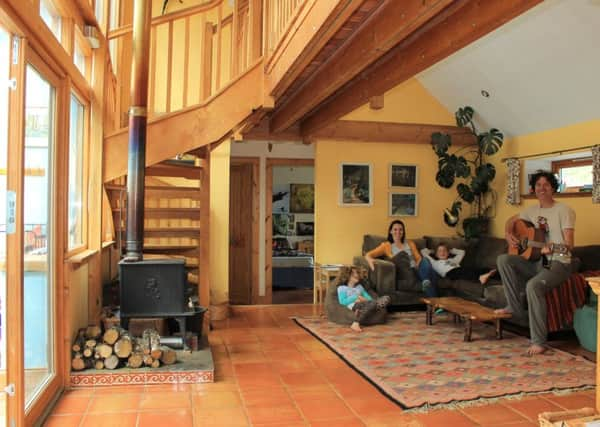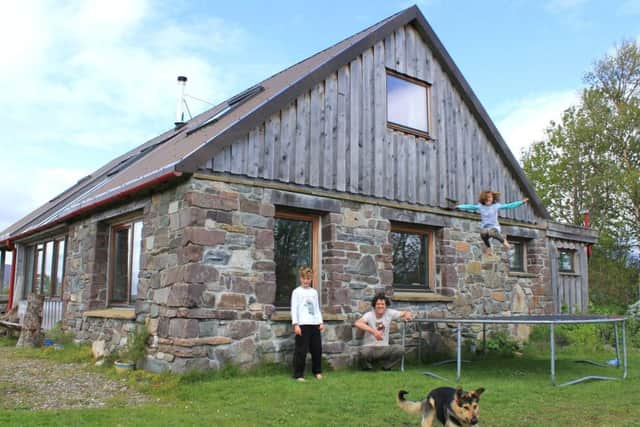Crofters innovate with golf courses, caravan sites


The first survey of its kind of crofters across the country reveals that they are combining traditions dating back centuries with more innovative approaches in the 21st century.
In what has been hailed an “invaluable” insight into the community, initial analysis of the landmark census of more than 16,500 crofts shows that nearly all of those who responded (97 per cent) said their land is cultivated and maintained, with nearly nine out of ten (87 per cent) currently resident on their croft.
Advertisement
Hide AdAdvertisement
Hide AdOut of the estimated 14,000 crofters who returned their census, more than three-quarters (76 per cent) confirmed they kept or bred livestock, while close to half (43 per cent) used their land for cropping. Some 22 per cent said they grew fruit and vegetables on their land, while 13 per cent planted trees.


However, a sizeable minority are pursuing new ways of making the land work for them. One in five (20 per cent) said they took part in conservation activity, while 11 per cent were using their land for caravan and camping sites, riding centres and golf courses.
One such example is the Lighthouse Keeper’s golf course in Fair Isle, the remote Shetland island. A challenging six-hole course laid out on croft land, it originally featured tin cans for cups, with broom handles used as pins.
The course has since been reinstated by Tommy Hyndman, a resident on the island. Sheep still graze on its undulating fairways and it has become a tourist attraction in its own right.
A system of land tenure unique to Scotland, crofting was established in the late 19th century as a way to help communities who had suffered as a result of the Highland Clearances, providing them with security against eviction.
Although there have been concerns in recent years as to its sustainability, Patrick Krause, chief executive of the Scottish Crofting Federation, said the findings were very encouraging.
“There has not been enough information about what is actually happening in crofting and it’s incredibly important to get a feel for what’s happening out there,” he said.
“It’s very reassuring to see such a high percentage of people living on and using their croft. If there’s one thing you can say about crofters, it’s that they persist – it’s good to see all the different enterprises going on, such as golf courses, which is brilliant.
Advertisement
Hide AdAdvertisement
Hide Ad“At the end of the day, whilst it’s traditional for people to keep livestock on their croft, it’s great to see they are thinking of other things, and that’s the key.”
The census was issued by the Crofting Commission, the Scottish Government public body which aims to regulate crofting and promote the occupancy of crofts and active land use.
Catriona Maclean, the commission’s chief executive, said the findings painted a “positive picture” for crofting in Scotland.
She said: “We are extremely pleased with the response to the crofting census. It shows the willingness of crofters to work together to secure the future of crofting.”
It is hoped the annual census will help provide greater insight into crofting and help the Scottish Government and other agencies when it comes to assessing its contribution.
Krause added: “This census will also serve as a wake-up call to crofters and will help the relatively small percentage of people who are not using their croft to think about what they are going to do with it.”
Dr Aileen McLeod, the environment minister, said: “This invaluable data on how crofts are being used will help nurture and sustain crofting for future generations and enable the Crofting Commission to work with those crofters on the various options available.”
A recent Scottish Government report on the economic wellbeing of crofting found it generated an estimated annual revenue of almost £86 million.
Advertisement
Hide AdAdvertisement
Hide AdCase study: Pioneering eco-croft heated by 2,500 old milk containers
A PIONEERING green croft house that began as “an entirely naive and innocent” notion has sprung up in a village in the Scottish Highlands.
The eco-friendly home is the brainchild of first-time builder Alex Glasgow, a 45-year-old forest designer and mountain biking guide living in Plockton, a seaside spot renowned for its high property prices.
He was lucky enough to receive the plot of land as a gift, but support from the local community and favours from friends meant he managed to build his eye-catching four-bedroom family home for around £90,000.
“I had been designing hypothetical eco houses for ages and talking about one day building my own,” he said.
“Then my uncle took me up to his croft and said it was mine if I wanted it. He really called my bluff so I felt I had to go for it. I was in way over my head but I think I have roughly pulled it off.”
The house has a composting toilet, a plumbing system fed by filtered rainwater, “serious” insulation and triple-glazed windows, all chosen to save energy, give maximum protection against the harsh climate and minimise the impact on the environment.
But Glasgow is most proud of the innovative heating scheme he dreamt up himself.
Advertisement
Hide AdAdvertisement
Hide AdIt relies on 2,500 old milk containers, which he filled with water and sealed in a chamber beneath the floor. Warmth collected via a sun room on the south-facing side of the house is stored in the five tonnes of water contained in the cartons and used as a central-heating system, backed up by a wood-burning stove.
“It could have gone either way, but it is absolutely brilliant,” he said.
He remains “impressed and touched” by the “massive community effort” that kicked off when he began collecting the cartons.
“I would look out of the window and see people stopping to throw strings of 200 milk cartons into my parents’ garden. People came from all around. It’s really lovely how the community dug deep to help me out.”
But he admits now that he would not have embarked on the project if he had known then what he does now.
“With hindsight, there are a lot of things I would have done differently. Some things could have been done more easily but the house would not have the character and look that it does.
“There are a few ideas I didn’t achieve, but it’s a theoretical house.”
Glasgow lives at Corkil with his partner Kyla Orr, a marine scientist. His two children, nine-year-old Ash and seven-year-old Poppy, also stay there for part of the time.
ILONA AMOS